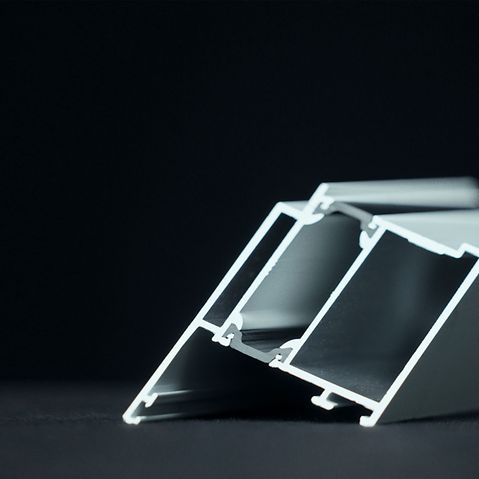
With suitable materials, fabricators can take active control of embodied emissions in the building envelope and have a positive effect on the carbon footprint of the building. The aim is to ensure that installed materials can be fed back later on into the circular economy as recycled materials and reused multiple times in order to contribute to improved sustainability.
Low carbon aluminium and ultra-low carbon aluminium
Aluminium is an ideal material for reducing embodied emissions. The sustainable material and recyclate can be recycledendlessly and boast and low CO₂ emissions, even when reused multiple times.
In construction, special aluminium grades can particularly reduce the carbon footprint of a building. The Schüco low carbon and ultra-low carbon aluminium grades contain far less embodied carbon than traditional aluminium types, thanks to the use of recycled aluminium and of green electricity during manufacturing, among other things.
Embodied carbon means the CO₂ emissions in a material that are created during fabrication of the units. The EPD for profiles made from Schüco low carbon aluminium reports a value of less than 4.9 CO₂e/kg and the value for Schüco ultra-low carbon profiles is even below 2.7 CO₂e/kg. Ultra-low carbon aluminium also contains at least 75% post-consumer-recycled material.
The type of profile surface finish, such as anodisation or powder coating, also has a significant impact on the CO₂ value of the building envelope. Anodised aluminium coatings applied using anodisation result in higher CO₂ values in the building envelope than the more energy-efficient power coatings. Choosing powder coatings makes it possible to reduce the CO₂ incorporated into buildings units such as the façade construction in a targeted way.
Cradle to Cradle-certified systems
Cradle to Cradle/C2C-certified systems make a key contribution to circularity, sustainability, material health, environmental protection and social aspects. With 76 systems currently certified, Schüco is one of the C2C pioneers in the construction sector. All products constructed in line with the C2C principle are optimally designed for reuse after their active usage phase.
In particular, aluminium as a recycled material can be fed back into the A/U/F loop (Aluminium und Umwelt im Fenster- und Fassadenbau – aluminium and the environment in window and façade construction) as often as you want. Separating and melting down the raw material means it can be reused to the greatest possible extent after the usage phase ends, thereby reducing the need for newly manufactured aluminium in façade constructions.